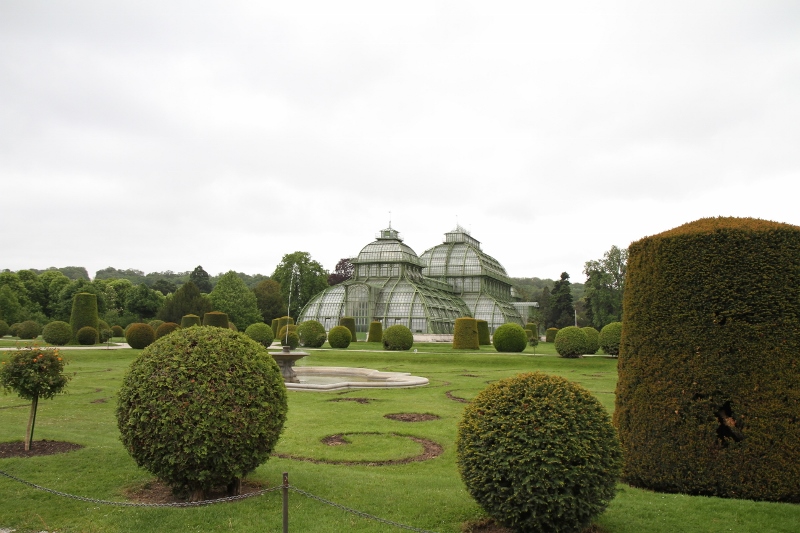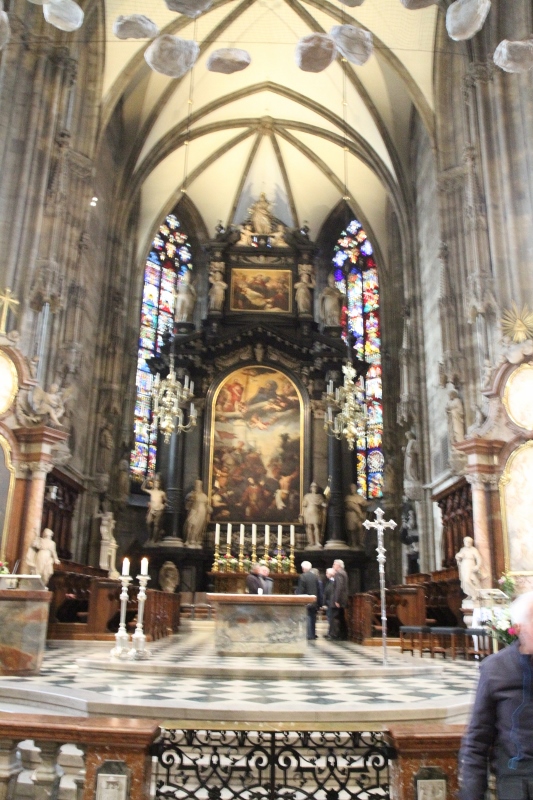Our journey continues in Vienna, but before we get there, we have a brief stop over in Bratislava, the capital of Slovakia. The drive from Budapest was about 2 hours to reach Bratislava. With a population of less than ½ a million Bratislava is one of the smallest capital cities in Europe and it is the only one that borders two sovereign states, Austria and Hungary. Much of the old city remains intact and has a quaint early 19th century feel.




The Opera House
Because of its location it has a storied history as the coronation site and legislative center of the Kingdom of Hungary during the Ottoman occupation, from the early 16th through the late 18th century. 11 Hungarian kings and queens were crowned at St. Martin’s Cathedral within the old city walls.

St. Martin’s 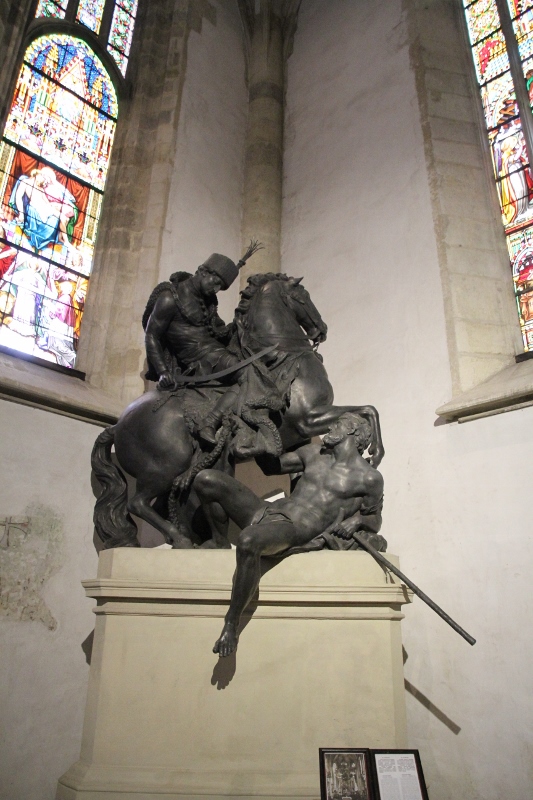
St. Martin slaying the dragon 

The list of Kings Crowned here 
The Choir 
The name Bratislava is relatively recent. Until the 19th century the city was known as Pressburg, and the Peace of Pressburg, ending the war between Austria and France in 1805 was signed here. Around the town, there are some buildings with Cannonballs in their walls. These are from the war with Napoleon. In the days after the war, if your house could show damage from the war, i.e. a cannonball, you did not have to pay taxes.

The building on the left is not a church. The one on the right is a church. 
Cannon ball to the left of the window.
That, alas, is no longer the case.
Just outside St. Martin’s is a memorial to the Jews of the city. The image on the wall depicts a synagogue destroyed during the communist occupation to make way for a bridge.

Around town there are also whimsical buildings, tour buses and statutes to various residents and visitors alike.



Homage to a local who always greeted people with a smile. 
The working man is smiling because from his perspective he has an interesting view when a women walks by.
A particularly interesting one was of Hans Christian Anderson. On the back were likenesses of various characters from his stories. One in particular caught my attention as being relevant today.


The Emperor has no cloths.
It was a cold windy day, so we elected to shorten our stay in this lovely city and continue on to Vienna. After an hour’s drive, we arrived in “The City of Music”. Our hotel in the middle of the old city was the historic and storied Sacher Hotel. We were greeted warmly and told that since it was our anniversary, they had upgraded our room. Our suspicions were confirmed as we got to our room and found a Sacher Torte provided by our wonderful children (Thank you again, Ben, Chloe, Elyse and Megan). There was also a bottle of sparkling wine, actually two, provided by the Hotel for the occasion.

Lobby of the Sacher Hotel 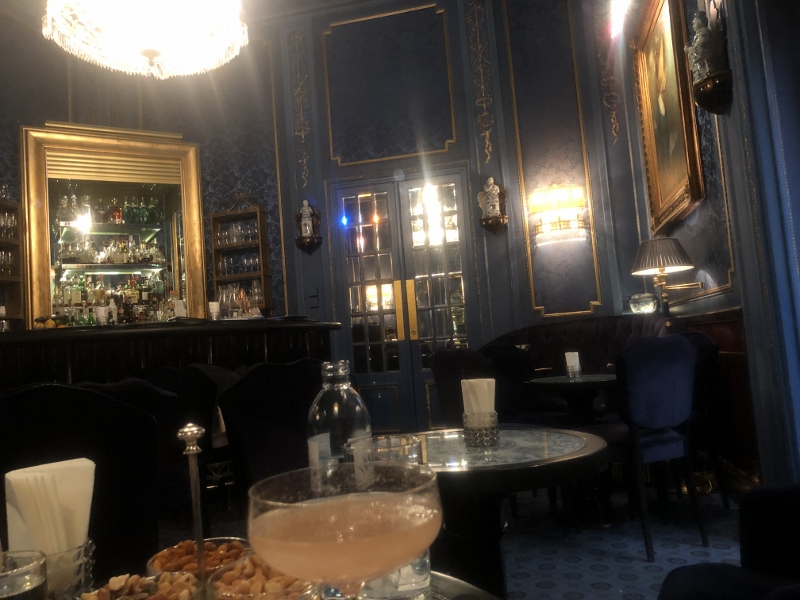
The Blue Bar 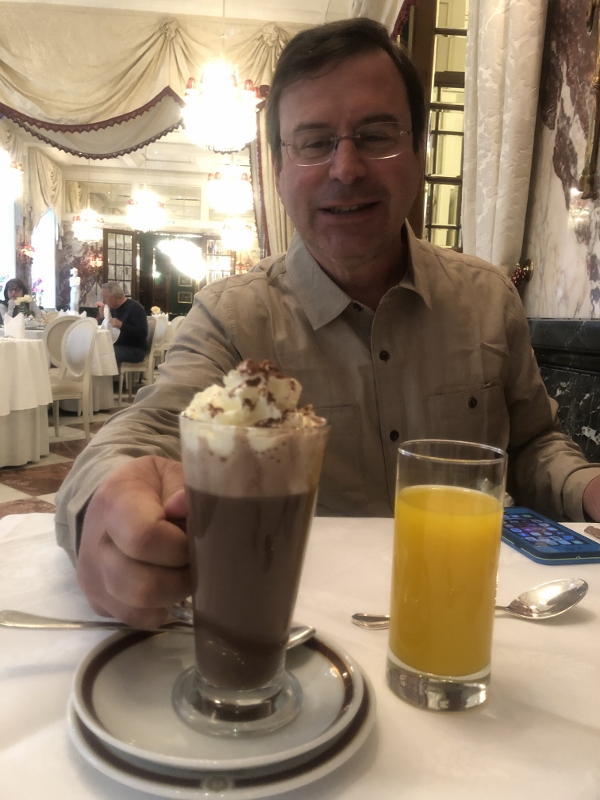
Breakfast starts with wonderful hot chocolate. 
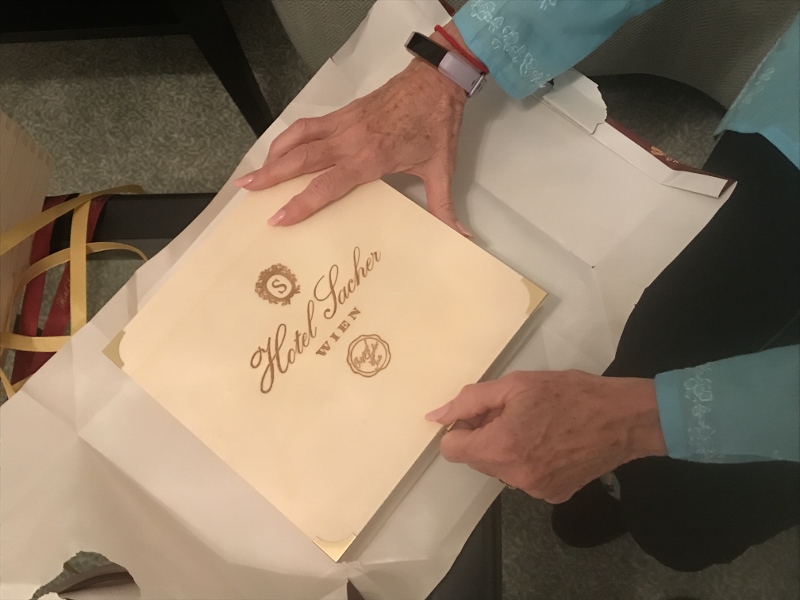

Strolling around and touring Vienna is a lesson in Art, Music and History, particularly from the 17th through the 19th centuries. This is the capital city of the Hapsburg’s who ruled the Austro-Hungarian empire that, at times, stretched from Asia through central Europe, Spain and the New World for almost 500 years. This is the city of Mozart, Beethoven and Strauss. This is “The City of Dreams” where Sigmund Freud called home.


Winter Palace 

The Opera House
Our walking tour started with a visit to the old city and the grounds of he Winter Palace or the Hofburg. This is actually a complex of many buildings. The first we entered is the Augustinian Church. Originally build in the 14th century as a parish church of the imperial court it was the site of many Habsburg weddings, including the wedding of Archduchess Marie Louise to Emperor Napoleon Bonaparte (in abstentia).
To the right of the main alter is the Loreto Chapel. This holds the silver urns containing the hearts of Habsburg rulers.

The alter 
The Loreto Chaple 
Behind that black door are the hearts of the Hapsburg rulers.
Notable among the church’s monuments is a memorial to Archduchess Maria Christina, favorite daughter of the Empress Maria Theresa.

Other Churches we visited were Minoritenkirche which has a reproduction in mosaic of da Vinci’s Last Supper, Church of St. Jerome which has several skeletal relics and of course St. Stephen’s Cathedral, the mother church of the Roman Catholic Archdioceses, with its soaring Gothic columns.
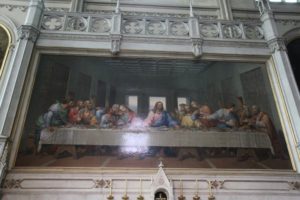

Minoritenkirche 

The close up shows the tiles.

Church of St. Jerome 

Returning to the Winter Palace, we visited the Treasury that houses a collection of Imperial regalia including the crown jewels of the Hapsburgs and the Holy Roman Empire.

The Holy Grail 
A Unicorn’s horn – Actually from a Narwhal 
The cradle of Napoleon’s son. 
Hapsburg Crown Jewels 
Crown of the Holy Roman Empire 

The spear that pierced Christ, Piece of the cross.
Throughout our walk we passed many statutes and interesting buildings. One of the most interesting was the Hundertwasserhaus. This is an apartment house built in an impressionist style integrating concepts of harmony with nature.

Mozart 
Monument to plague victims 
Handertwasserhaus 
The Belvedere Palace, home of Prince Eugene of Savoy who defeated the Turks and is a hero to many, is now an art museum housing many of the works of Gustov Klimt.


The Kiss
No visit to Vienna would be complete without a visit to the Shonbrunn Palace, former residence of the Habsburg monarchs. There are many of the original furnishings from the 17th through the 20th century the time of the last Emperor. Unfortunately, they do not allow pictures inside, but it has fabulous grounds.

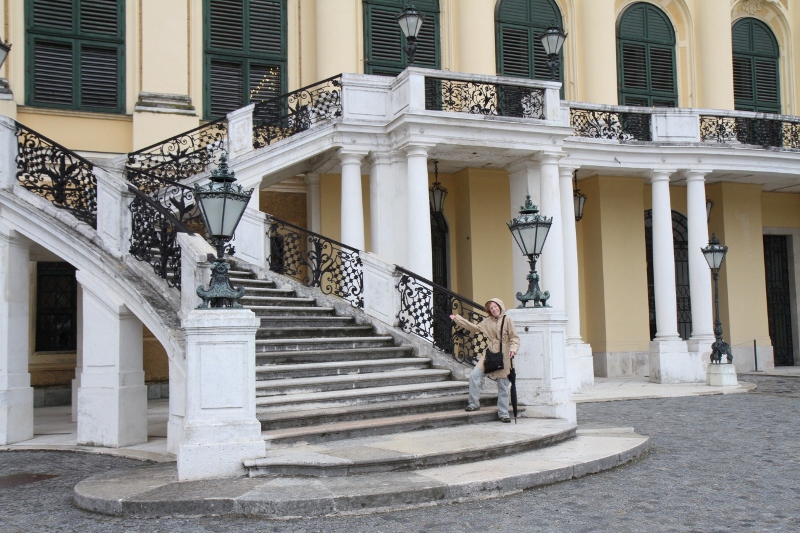
Cathy looking for a new house? 


